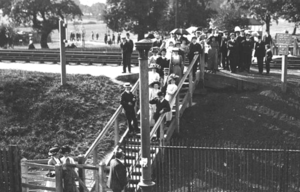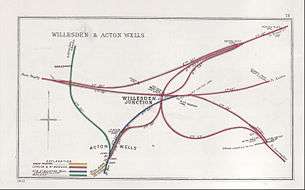Dudding Hill Line
| Dudding Hill Line | ||||||||||||||||||||||||||||||||||||||||||||||||||||||||||||||||||||||||||||||||||||||||||||||||||||||||||||||||||||||||||||||||||||||||||||||||||||||||||||||||||||||||||||||||||||||||||||||||||||
|---|---|---|---|---|---|---|---|---|---|---|---|---|---|---|---|---|---|---|---|---|---|---|---|---|---|---|---|---|---|---|---|---|---|---|---|---|---|---|---|---|---|---|---|---|---|---|---|---|---|---|---|---|---|---|---|---|---|---|---|---|---|---|---|---|---|---|---|---|---|---|---|---|---|---|---|---|---|---|---|---|---|---|---|---|---|---|---|---|---|---|---|---|---|---|---|---|---|---|---|---|---|---|---|---|---|---|---|---|---|---|---|---|---|---|---|---|---|---|---|---|---|---|---|---|---|---|---|---|---|---|---|---|---|---|---|---|---|---|---|---|---|---|---|---|---|---|---|---|---|---|---|---|---|---|---|---|---|---|---|---|---|---|---|---|---|---|---|---|---|---|---|---|---|---|---|---|---|---|---|---|---|---|---|---|---|---|---|---|---|---|---|---|---|---|---|---|
 The Dudding Hill Line passing through Harlesden station | ||||||||||||||||||||||||||||||||||||||||||||||||||||||||||||||||||||||||||||||||||||||||||||||||||||||||||||||||||||||||||||||||||||||||||||||||||||||||||||||||||||||||||||||||||||||||||||||||||||
| Overview | ||||||||||||||||||||||||||||||||||||||||||||||||||||||||||||||||||||||||||||||||||||||||||||||||||||||||||||||||||||||||||||||||||||||||||||||||||||||||||||||||||||||||||||||||||||||||||||||||||||
| Type | Freight railway | |||||||||||||||||||||||||||||||||||||||||||||||||||||||||||||||||||||||||||||||||||||||||||||||||||||||||||||||||||||||||||||||||||||||||||||||||||||||||||||||||||||||||||||||||||||||||||||||||||
| Locale | Greater London | |||||||||||||||||||||||||||||||||||||||||||||||||||||||||||||||||||||||||||||||||||||||||||||||||||||||||||||||||||||||||||||||||||||||||||||||||||||||||||||||||||||||||||||||||||||||||||||||||||
| Termini |
Cricklewood and Brent Curve Junctions Acton Wells Junction | |||||||||||||||||||||||||||||||||||||||||||||||||||||||||||||||||||||||||||||||||||||||||||||||||||||||||||||||||||||||||||||||||||||||||||||||||||||||||||||||||||||||||||||||||||||||||||||||||||
| Stations | 0 (2 stations closed) | |||||||||||||||||||||||||||||||||||||||||||||||||||||||||||||||||||||||||||||||||||||||||||||||||||||||||||||||||||||||||||||||||||||||||||||||||||||||||||||||||||||||||||||||||||||||||||||||||||
| Operation | ||||||||||||||||||||||||||||||||||||||||||||||||||||||||||||||||||||||||||||||||||||||||||||||||||||||||||||||||||||||||||||||||||||||||||||||||||||||||||||||||||||||||||||||||||||||||||||||||||||
| Opened | 1875 | |||||||||||||||||||||||||||||||||||||||||||||||||||||||||||||||||||||||||||||||||||||||||||||||||||||||||||||||||||||||||||||||||||||||||||||||||||||||||||||||||||||||||||||||||||||||||||||||||||
| Closed | 1902 (passenger services) | |||||||||||||||||||||||||||||||||||||||||||||||||||||||||||||||||||||||||||||||||||||||||||||||||||||||||||||||||||||||||||||||||||||||||||||||||||||||||||||||||||||||||||||||||||||||||||||||||||
| Owner | Network Rail | |||||||||||||||||||||||||||||||||||||||||||||||||||||||||||||||||||||||||||||||||||||||||||||||||||||||||||||||||||||||||||||||||||||||||||||||||||||||||||||||||||||||||||||||||||||||||||||||||||
| Technical | ||||||||||||||||||||||||||||||||||||||||||||||||||||||||||||||||||||||||||||||||||||||||||||||||||||||||||||||||||||||||||||||||||||||||||||||||||||||||||||||||||||||||||||||||||||||||||||||||||||
| Line length | 4 mi (6.4 km) | |||||||||||||||||||||||||||||||||||||||||||||||||||||||||||||||||||||||||||||||||||||||||||||||||||||||||||||||||||||||||||||||||||||||||||||||||||||||||||||||||||||||||||||||||||||||||||||||||||
| Number of tracks | Double track throughout | |||||||||||||||||||||||||||||||||||||||||||||||||||||||||||||||||||||||||||||||||||||||||||||||||||||||||||||||||||||||||||||||||||||||||||||||||||||||||||||||||||||||||||||||||||||||||||||||||||
| Track gauge | 4 ft 8 1⁄2 in (1,435 mm) standard gauge | |||||||||||||||||||||||||||||||||||||||||||||||||||||||||||||||||||||||||||||||||||||||||||||||||||||||||||||||||||||||||||||||||||||||||||||||||||||||||||||||||||||||||||||||||||||||||||||||||||
| Operating speed | 30 mph (48 km/h) | |||||||||||||||||||||||||||||||||||||||||||||||||||||||||||||||||||||||||||||||||||||||||||||||||||||||||||||||||||||||||||||||||||||||||||||||||||||||||||||||||||||||||||||||||||||||||||||||||||
| ||||||||||||||||||||||||||||||||||||||||||||||||||||||||||||||||||||||||||||||||||||||||||||||||||||||||||||||||||||||||||||||||||||||||||||||||||||||||||||||||||||||||||||||||||||||||||||||||||||
The Dudding Hill Line (or Dudding Hill Loop) is a railway line in north-west London running from Acton to Cricklewood. The line has no scheduled passenger service, no stations, no electrification, and a 30 miles per hour (48 km/h) speed limit with semaphore signalling, and is lightly used by freight and very occasional passenger charter trains. It is roughly 4 miles (6.4 km) long.
Route
The southernmost point of the Dudding Hill Line is in Acton, where it branches north from the North London Line between Acton Central and Willesden Junction stations, and immediately to the west of the proposed site of the Old Oak Common High Speed 2 station. From there it heads north then east, passing through Gladstone Park and terminating at a triangular junction with the Midland Main Line between Cricklewood and Hendon. There are intermediate junctions with the West Coast Main Line from the south at Harlesden and the Chiltern Main Line from the south at Neasden.[1]
History

The line was opened through open countryside on 1 October 1868 (goods) and 3 August 1875 (passengers) as the Midland and South Western Junction Railway,[2] as part of the Midland Railway's extension to London. It connected the Midland Main Line, and what would become its large Cricklewood goods yard, to the North and South Western Junction Railway, now part of the North London Line, at Acton Wells (an area now called North Acton).[3] It had stations at Dudding Hill and Harlesden (the latter also called Harrow Road and Stonebridge Park).[4]
The M&SWJR was authorised on 14 July 1864 and absorbed by the Midland Railway on 30 July 1874.[2] Confusingly, the similar name Midland and South Western Junction Railway was later used for a completely different railway in Gloucestershire, which was eventually taken over by the Great Western Railway.
From 1878 to 1880[3] it formed the basis of the Midland Railway's Super Outer Circle, which ran from St Pancras to Earl's Court via Cricklewood, Acton and the District line.[5] Various other, shorter routes were then used, but passenger demand was low, and it was closed to regular passenger traffic in 1902.[3]
During World War II, air-raid shelters were constructed within the embankment.[6]
Although railway usage is almost always "Dudding Hill Railway", the geographical area is usually called "Dudden Hill", and there is a London Borough of Brent electoral ward of that name. Dudden Hill is named after a Saxon settler called Dodda. The earliest known record, as Dodynghill, dates from 1544. "Dudding Hill" has been regarded historically as the more genteel spelling of the name.[7]
The line became an important freight line, and southwest-to-northwest chords were later added to the West Coast Main Line at Harlesden, and what is now called the Chiltern Main Line (originally the Great Central Railway) at Neasden. War-time traffic was particularly heavy.
At various times, summer special trains were run on the Dudding Hill Line, to carry holidaymakers from the Midlands to south coast holiday resorts.
Current use

Nowadays the freight traffic is perhaps a dozen trains a day each way. The line is hardly mentioned in the April 2007 Network Rail Freight Route Utilisation Strategy report, or the August 2007 London Rail 'Rail Freight Strategy' report.[8]
The main traffic is aggregates (including to a cement depot at Neasden) and compacted household waste from depots at Brent Cross and Dagenham to the land-fill site at Calvert in Buckinghamshire.
The line is still authorised for passenger services. Very occasionally, it is used for chartered passenger trains, including Pullman heritage coaches.
In 2009, the track has received considerable maintenance in parts, including complete track and ballast removal and replacement. It was informally thought locally by Network Rail staff that replacement signalling, controlled from Upminster, was planned for Christmas 2010, leading to the closure of the three signal boxes (staffed 24-hours a day, at least during the working week). However, financial constraints within Network Rail have now delayed this timescale.
Development proposals

Crossrail
In 1990 Crossrail plans were announced by Secretary of State of Transport Cecil Parkinson, which would have seen trains using part of the line to reach the Chiltern line to Aylesbury. A new viaduct would have run alongside the Grand Union Canal from Old Oak Common to Harlesden, and the first stop out of Paddington station would have been Wembley Park, for connections to the Metropolitan line and Jubilee line. Later plans replaced all this with a new tunnel connection,[9] and finally the Aylesbury branch was dropped completely from the scheme.[10]
Heathrow Express
During the late 1990s, BAA planned to run some or possibly all Heathrow Express trains along the line to St. Pancras.[11]
Campaign for Better Transport proposal
In early 2008, the London Group of the Campaign for Better Transport published a plan for a North and West London Light Railway.[12]
High Speed North
In July 2008, a high-speed rail network was proposed by the 2M Group, a campaigning group representing people affected by Heathrow Airport expansion, as an alternative to increased air traffic. A rail route running from Heathrow to Cambridge would connect with the Midland Main Line at a "Cricklewood Interchange" station, using new track north from Heathrow to Ruislip, then the Great Central Line (nowadays the Chiltern main line) to Neasden, then a short northern-most section of the Dudding Hill Line from Neasden to Brent Cross.[13]
After several independent efforts, in early 2009 the British Government began an official detailed study of possible high-speed rail routes
London Overground proposal
In June 2013, the Mayor of London and the London Boroughs of Brent, Ealing and Hammersmith & Fulham released 'vision' consultation documents[14] about the Old Oak Common area of west London. This involves a major development area for London, based around a new Old Oak Common station for High Speed 2 and Great Western Main Line, including Crossrail.
The vision mentions various connections to the Transport for London London Overground system, connecting Old Oak to the North London Line, West London Line, and two new branches, to Hounslow, and via the Dudding Hill Line to Thameslink stations on the Midland Main Line.
West London Orbital Railway proposal
In September 2017, the West London Alliance, a partnership between the local authorities of Barnet, Brent, Ealing, Hammersmith and Fulham, Harrow, Hillingdon and Hounslow, proposed a new West London Orbital Railway passenger service that would connect Hounslow with Hendon and West Hampstead via the Dudding Hill Line. New stations would be built at Neasden and Harlesden, and an interchange with the Elizabeth Line and the Overground's North London Line in the vicinity of Old Oak Common on Victoria Road, North Acton. On the Midland Main Line new platforms would be built at Hendon and at Cricklewood and West Hampstead, while the Hendon service could also call at the planned new station for Thameslink services at Brent Cross/Staples Corner. The West Hampstead branch would be complete by 2026 and the Hendon branch by 2029 with 4 trains per hour on each branch end. The project's benefit-to-cost ratio is estimated to be in excess of 50:1.[15][16]
Historical and present-day maps
 The line at Neasden
The line at Neasden The southern junction at Acton
The southern junction at Acton
See also
References
- ↑ North London Line and Thameside Network Rail Archived 26 September 2006 at the Wayback Machine.
- 1 2 Awdry, Christopher (1990). Encyclopedia of British Railway Companies. London: Guild Publishing. p. 94. CN 8983.
- 1 2 3 Hendon: Communications British History Online
- ↑ Willesden: Communications British History Online
- ↑ Circle Line Clive's Underground Line Guides
- ↑ "Derailment of a freight train at CricklewoodCurve, 31 January 2006" (PDF). Rail Accident Investigation Branch.
- ↑ M.C. Barres-Baker. "Places in Brent – Neasden and Dudden Hill" (PDF). Brent London Borough Council. Retrieved 14 April 2014.
- ↑ London Rail Archived 2011-06-05 at the Wayback Machine. Rail Freight Strategy report
- ↑ Crossrail Archived 13 October 2007 at the Wayback Machine. London East-West Study, showing since-abandoned Crossrail plans
- ↑ Crossrail Various current maps available on web site
- ↑ Transport Plans for London Various plans for Heathrow services into central London
- ↑ London Campaign for Better Transport North and West London light railway (NWLLR) / Brent Cross Railway (BCR) plan
- ↑ "High Speed North – Joining up Britain" (PDF). 1 July 2008. Archived from the original (PDF) on 10 May 2009. Retrieved 1 August 2008.
"Councils opposed to airport expansion unveil plans for £30 billion high speed rail link". 22 July 2008. Retrieved 1 August 2008. - ↑ Vision for Old Oak Consultation Archived 2013-08-01 at Archive.is
- ↑ "Dudding Hill Revival". Modern Railways (Capital Connection supplement). Key Publishing Ltd. November 2017. pp. 26–28.
- ↑ Desborough, Jenny (20 September 2017). "'A real game-changer': New West Orbital Railway connecting Barnet, Harrow, Hounslow, Ealing and other boroughs on the cards". Times series (north London). Retrieved 16 November 2017.
External links
- Dudding Hill station Subterranea Britannica
- Dudding Hill junction Trainspots web site
- Craven Park bridge Trainspots web site
51°33′25″N 0°14′02″W / 51.556929°N 0.234017°WCoordinates: 51°33′25″N 0°14′02″W / 51.556929°N 0.234017°W
